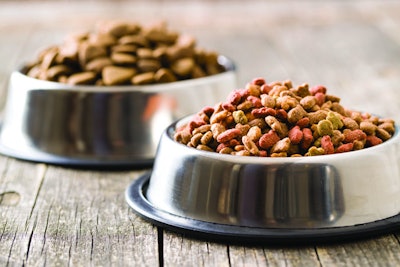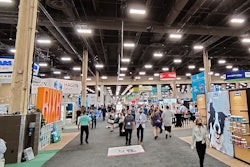
The Association of American Feed Control Officials (AAFCO) held its Annual Meeting "virtually" on August 2–4, 2021. Many items covering a broad variety of topics were on the agenda and will be discussed in a future column. As is always the case, though, a large proportion of AAFCO's deliberations pertained to issues involving pet food ingredients.
Information access and expansion
A big announcement at the opening session was that AAFCO has made online access to its feed terms and ingredient definitions (Chapter 6 of the Official Publication) open and free to the public. In other words, interested parties no longer have to purchase an Official Publication to view this information. The link is under the "Publications" tab on the AAFCO website (www.aafco.org/Publications/OP-Chapter-6-Public-Access). Importantly, this material remains the intellectual property of AAFCO, so access does not grant readers the right to reproduce, display or otherwise disseminate this copyright-protected information in any form without AAFCO's prior written consent.
The full AAFCO membership also voted in guidance for establishment of a "Common Foods Index" (CFI). Briefly, it will be a listing of foods that may be suitable for use in animal feeds but are not expressly defined by AAFCO. For example, for many, many years numerous whole fruits and vegetables, such as blueberries and carrots, have been tacitly allowed for use in pet foods. These types of ingredients are commonly understood by the public to be "food," hence do not require explicit approvals for use (note that is not the case for fractionated portions of the whole food, such as blueberry pomace or carrot extract).
Without any specific acknowledgement of the suitability of these types of items by AAFCO, though, their regulatory status remained unclear. By its nature the CFI cannot be exhaustive, but once established it should help both regulators and industry determine what is a "common food" by example.
After several years of deliberation, the Ingredient Definitions Committee (IDC) accepted a new table for publication that delineates an option for the declaration of vitamins on dog and cat food labels. Once this is approved by the membership (probably at the next AAFCO meeting in January 2022), companies would be able to declare them predominately by their "common" names, followed by a parenthetical identification of the official AAFCO name for the vitamin source.
Good examples would be "Vitamin B1 (Thiamine Mononitrate)" and Vitamin C (Ascorbic Acid)." Pet food manufacturers would not be obliged to follow this format (if space did not permit, for example, "Ascorbic Acid" alone in the ingredient declaration would also be acceptable). Importantly, at this time it only applies to dog and cat foods, not products for specialty pets or livestock, and only on labels at the consumer level (e.g., not on premix labels).
Using MSBC in pet foods
Also a hot topic for debate in recent years, the issue of use of menadione sodium bisulfite complex (MSBC) in pet foods appears to be on its way to resolution. Although MSBC is officially prior sanctioned for use in poultry feeds only, it has been used as an ingredient in a broad range of animal feeds (including pet foods) for multiple decades with neither documented safety concerns nor regulatory consternation. Recently, however, its inclusion in pet foods (and other non-poultry feeds) was challenged on regulatory grounds. This threat to continued use of MSBC had the potential for significant adverse impact, most notably the inability for a manufacturer to add a reliable source of vitamin K activity to fish-based cat foods, which is a requirement under the AAFCO Cat Food Nutrient Profiles.
All agree that establishing a new definition for MSBC to allow for broader use in animal feeds would be ideal. Unfortunately, MSBC was prior sanctioned for use in poultry feed in the 1950s, so notwithstanding the many decades of use in feeds for other species without evidence of harm, data that are directly on point to support the broader use are lacking. Generating the data necessary to meet current standards would be a tremendous undertaking.
To help remedy this conundrum, AAFCO convened a panel of experts to review the available scientific information. The panel's consensus was that MSBC was in fact safe and suitable for use in feeds for all species. As a result, AAFCO's plan for now is to issue a guidance document recommending its continued unfettered use while still encouraging eventual establishment of an official definition.
Other pet food ingredient news
In other ingredient news, the full membership approved a tentative definition for use of black soldier fly larvae in adult dog foods (including treats designated for adults). Also, a new tentative definition for black soldier fly larvae oil that covers the same use for dogs was accepted by the IDC and is to move forward for final AAFCO approval. With regard to hemp-derived ingredients, there is nothing made public to date to suggest that use in pet foods will be acceptable in the near future.
Briefly: top 5 takeaways
- AAFCO has made online access to its feed terms and ingredient definitions open and free to the public.
- The full AAFCO membership voted for establishment of a "Common Foods Index" (CFI), a listing of foods that may be suitable for use in animal feeds but are not expressly defined by AAFCO.
- The Ingredient Definitions Committee accepted a new table for publication that delineates an option for the declaration of vitamins on dog and cat food labels.
- The issue of use of menadione sodium bisulfite complex (MSBC) in pet foods appears to be on its way to resolution.
- A tentative definition for use of black soldier fly larvae in adult dog foods has been approved.
















